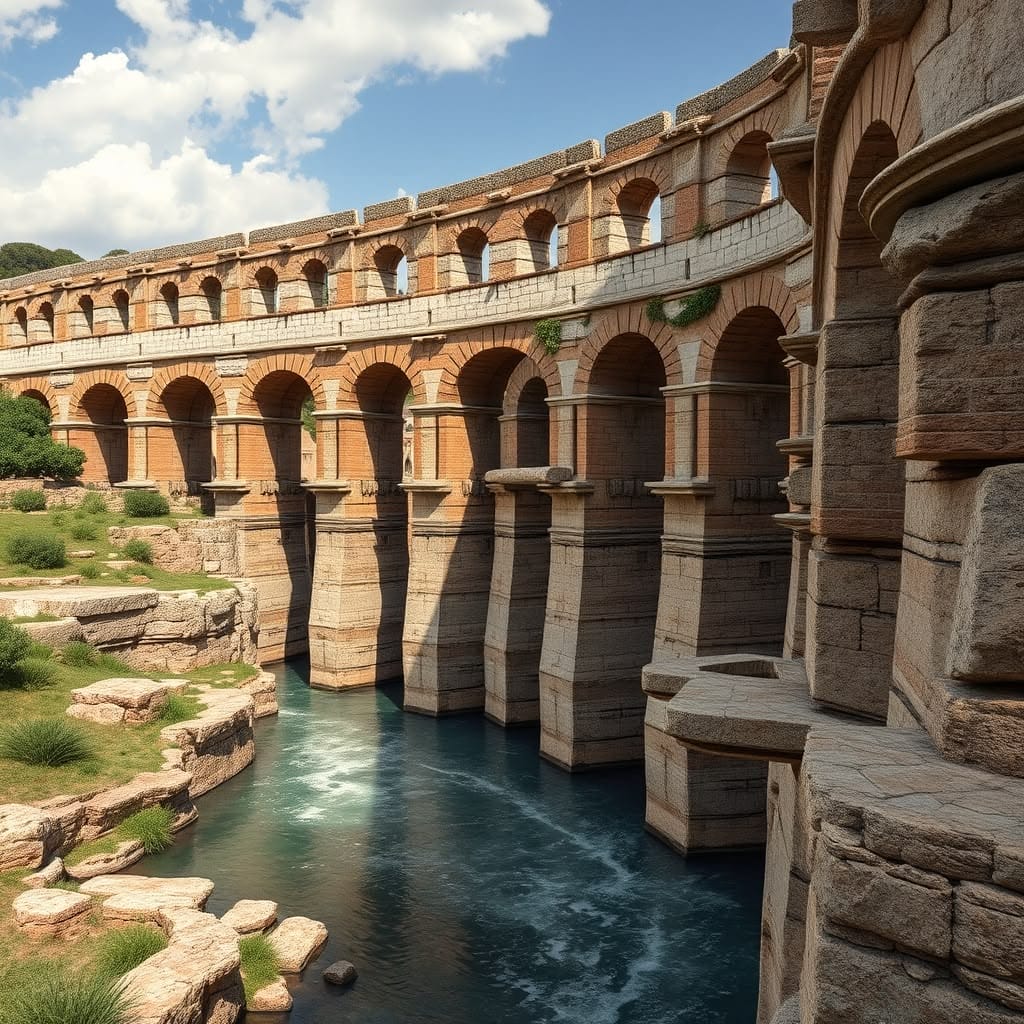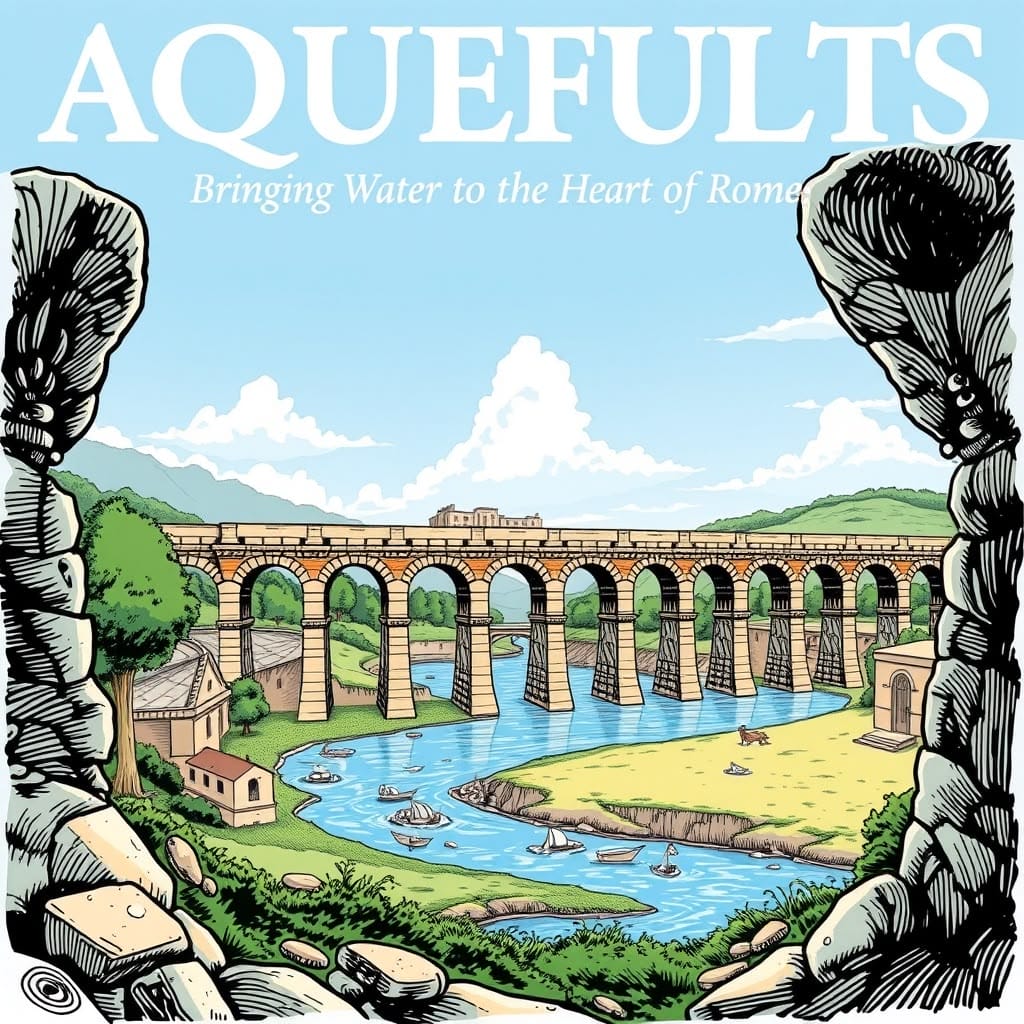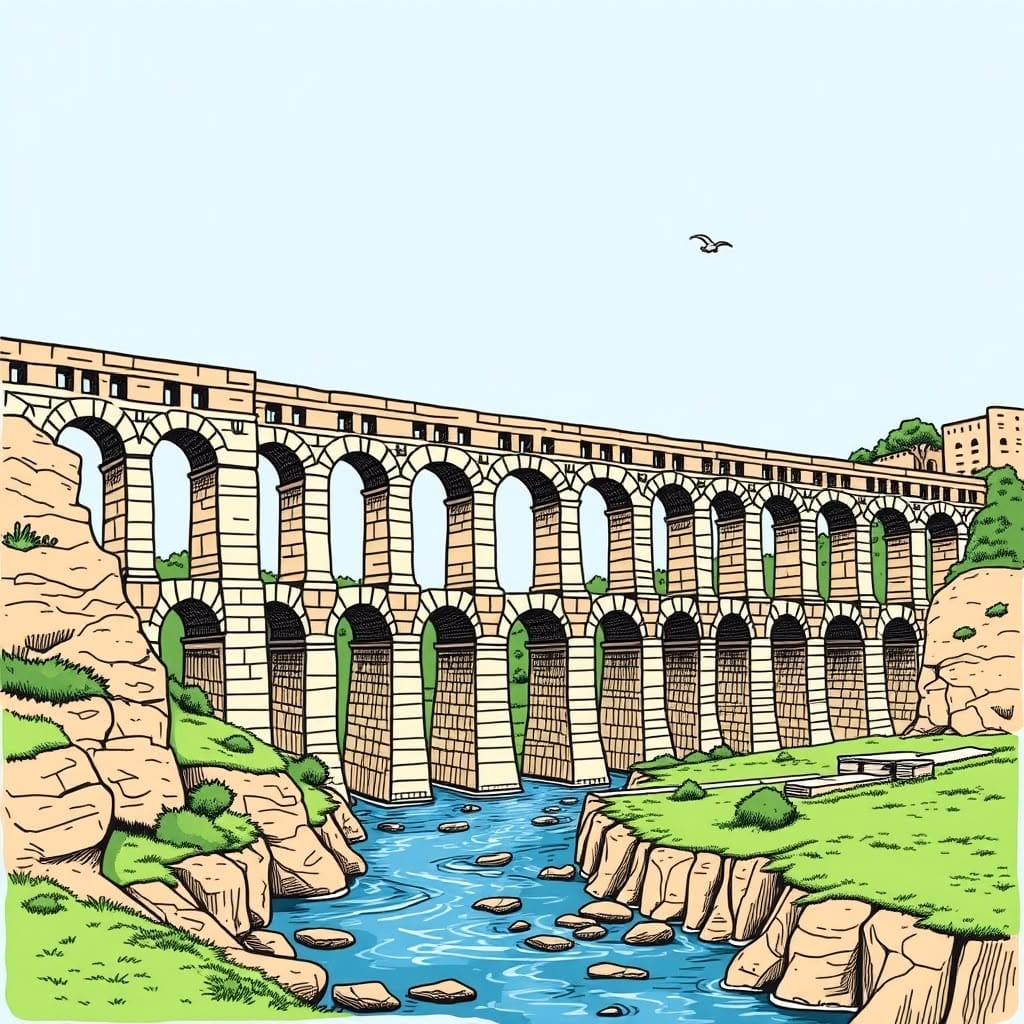In the ancient world, Roman aqueducts stood as testaments to engineering brilliance, revolutionizing urban life by bringing water to the heart of Rome. These structures, initiated during the late Roman Republic, exemplified the advanced engineering skills of the Romans through their gravity-driven design.
Aqueducts were pivotal to Roman civilization, providing a steady water supply essential for drinking, bathing, and agriculture. Their presence enabled urban expansion, improved public health, and showcased Roman prowess. Today, they continue to inspire modern water distribution systems worldwide.

Engineering Principles of Aqueducts
Gravity-Driven System
The foundation of Roman aqueducts lay in their ingenious use of gravity-driven water flow. This system relied on a meticulously designed gradient, allowing water to naturally flow from higher elevations to urban centers. Roman engineers employed durable materials like stone, concrete, and brick to construct robust structures capable of withstanding natural pressures. Arches and bridges were strategically built to maintain this gradient across valleys and uneven terrain, ensuring a consistent flow without compromising elevation.

Energy Efficiency
Despite the absence of explicit details on energy efficiency, the Romans’ gravity-based methodology inherently minimized energy usage. By utilizing natural slopes and gravity as the primary driving force, the need for mechanical intervention was eliminated. This approach allowed water to travel over vast distances with minimal energy input. Additionally, the incorporation of settling tanks and reservoirs facilitated effective water management, ensuring a steady supply to the urban populace. The combination of these techniques highlights the Romans’ ability to harness natural forces to achieve efficient water distribution.

Innovative Designs and Technologies
The Roman aqueducts are noted for their strategic use of arches and siphons, which exemplify the architectural brilliance of the era. Arches were integral in constructing long spans without relying on solid walls, thereby conserving materials while enhancing stability. This innovation allowed aqueducts to effectively traverse valleys and uneven terrain by evenly distributing weight across the structure.

Siphons were another remarkable innovation, facilitating water transport across low-lying areas. By employing pipes that dipped below the water source, siphons used gravity to maintain a consistent water flow across varying elevations. This method was crucial in overcoming geographical challenges and ensuring uninterrupted water delivery.
Settling tanks played a pivotal role in maintaining water quality within the aqueduct system. These tanks functioned as natural filtration systems, where sediment and impurities were allowed to settle at the bottom. By improving water quality and regulating flow, settling tanks prevented blockages and ensured a constant supply of clean water to urban areas, significantly contributing to the sustainable operation of Roman aqueducts.

Social Impact of Aqueducts
The advent of Roman aqueducts marked a transformative era in urban development and public health. These structures provided a reliable supply of fresh water, essential for the burgeoning urban populations. This access facilitated the growth of complex infrastructures, enabling cities to support larger populations and fostering increased trade, commerce, and cultural activities.
“The availability of clean water significantly reduced waterborne diseases, improving public health standards across Rome.”
Aqueducts also played a crucial role in maintaining public health through the establishment of public baths and sanitation facilities, decreasing the incidence of waterborne diseases. Moreover, the water fed into public baths, fountains, and irrigation systems, enhancing both social life and agricultural productivity.
| Aspect | Pre-Aqueduct | Post-Aqueduct |
|---|---|---|
| Urban Capacity | Limited | Expanded |
| Public Health | Frequent Diseases | Improved Sanitation |
Overall, Roman aqueducts were not merely engineering feats but also pillars of societal advancement, laying the groundwork for modern urban planning and public health systems.

Influence on Modern Water Systems
The engineering brilliance of Roman aqueducts continues to inspire contemporary water distribution systems. Key parallels can be drawn in the use of gravity-driven flow, a principle central to both Roman and modern designs. By leveraging gravity, cities today minimize energy costs while ensuring efficient water flow across extensive networks.
Moreover, the use of arch construction in aqueducts has left a lasting legacy in modern infrastructure. Just as Romans used arches to traverse challenging terrains, modern bridges and elevated water channels adopt similar designs for durability and efficiency. The materials such as concrete and stone employed by the Romans have also informed the development of long-lasting and cost-effective modern water systems.
The impact of Roman aqueducts extends beyond engineering to urban planning. Cities like Paris and Los Angeles have embraced the Roman approach, integrating sustainable water management into their urban layouts. The strategic placement of water distribution systems continues to influence public health and city planning, underscoring the critical role of water management in building sustainable urban environments.

Conclusion
Roman aqueducts embody a remarkable blend of engineering prowess and social foresight, revolutionizing urban living by supplying water for public health and urban development. Their principles of gravity-driven flow and durable arch construction have indelibly shaped modern water systems and urban planning. Today, these ancient structures continue to inspire sustainable practices and urban layouts, echoing their enduring legacy in contemporary society. The lessons learned from Roman aqueducts remain vital as we strive for efficient and equitable water management in the modern world.

Frequently Asked Questions
Q: How did Roman aqueducts function to transport water?
A: Roman aqueducts relied on a gravity-driven system to guide water from sources like springs to cities over long distances. This process used minimal energy, relying on a gentle gradient to maintain a steady flow.
Q: What materials did Romans use in aqueduct construction?
A: Romans primarily used concrete and stone in aqueduct construction. These materials were not only durable but also set the foundation for modern construction techniques due to their longevity and strength.
Q: Were aqueducts only used for drinking water?
A: No, aqueducts were also crucial for public baths, fountains, and irrigation, significantly contributing to urbanization and public health.
Q: Is it true that aqueducts were always elevated structures?
A: This is a common misconception. While famous for their arches, aqueducts included underground tunnels and channels, adapting to the landscape to maintain the water flow.

